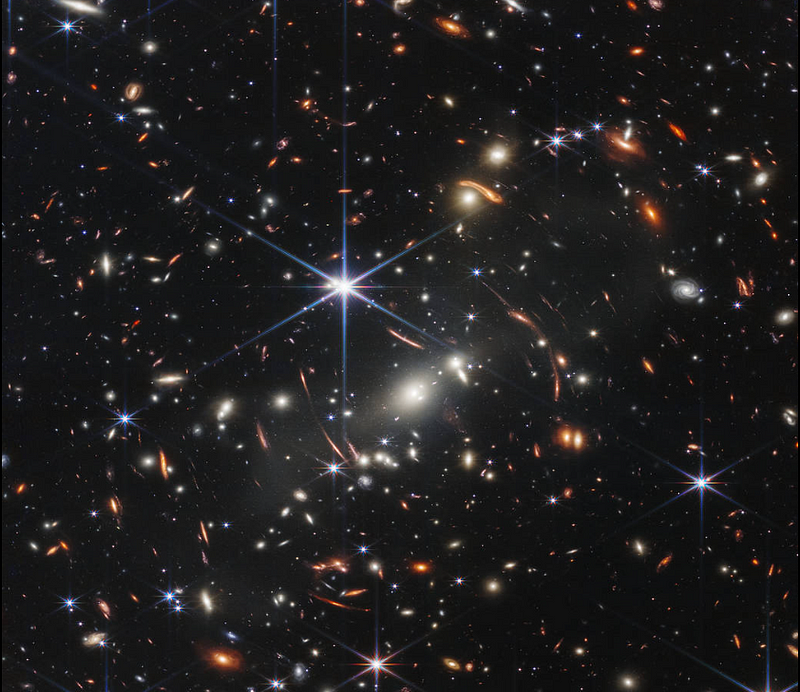# James Webb Telescope Uncovers Water on Milky Way Exoplanet
Written on
Chapter 1: The Marvels of the James Webb Telescope
The recent stunning deep infrared images captured by the James Webb Space Telescope have made waves globally. Science enthusiasts and casual observers alike were captivated by the breathtaking visuals that unveiled previously hidden regions of the universe in vibrant color and extraordinary detail. One notable example is the galaxy cluster SMACS 0723:

Webb's First Deep Field is the galaxy cluster SMACS 0723, bustling with thousands of galaxies. Image courtesy of NASA.
Amid the excitement surrounding these images, a discovery of profound significance emerged: the detection of WATER! The presence of water suggests a higher likelihood of organic life. Hence, I was thrilled to learn from NASA's website that the Webb telescope successfully identified the unmistakable signal of water vapor on the exoplanet WASP-96b.
What is an Exoplanet?
An exoplanet is a planet that orbits a star beyond our solar system.
What is WASP-96b?
WASP-96b is one of the approximately 5,000 known exoplanets in the Milky Way, situated 1,120 light-years away in the southern constellation of Phoenix. Although it is nearly half the size of Jupiter, it completes an orbit around its star in a mere 3.4 Earth days, making it a fast-spinning, high-temperature (1000°F) gas giant.
How Do Scientists Know?
As WASP-96b transits in front of its sun, it blocks its light in a specific manner. Scientists analyze this “absorption pattern” alongside the light emitted by WASP-96b when it is not transiting. By comparing these two light patterns, astrophysicists can deduce the chemical compositions potentially present in WASP-96b's atmosphere.
“On June 21, Webb’s Near-Infrared Imager and Slitless Spectrograph (NIRISS) collected light from the WASP-96 system over a period of 6.4 hours as the planet crossed in front of the star,” NASA reported.
The Result?
NASA scientists are confident that water vapor exists in the atmosphere of WASP-96b. Here is the resulting analysis:

Image courtesy of NASA.
"This is fantastic to see," remarked Jonathan Fortney, an astronomer from the University of California, Santa Cruz, as reported by the New York Times. "I’m at a loss for words!" Fortney acknowledged the unexpected nature of this finding for the scientific community.
A Significant Advancement
While this is not the first instance of a telescope detecting water on an exoplanet—Hubble made a similar discovery in 2013—NASA emphasizes that Webb's high-resolution and detailed results represent "a giant leap forward" in understanding potentially habitable planets beyond Earth.
Given the challenges we face on our own planet, including climate change, environmental degradation, and geopolitical tensions, the urgency to explore and learn about other habitable worlds like WASP-96b becomes increasingly apparent.
Chapter 2: The Importance of Exoplanet Research
As we continue our quest to understand the cosmos, the findings from the James Webb Space Telescope may pave the way for future discoveries that could one day alter our perception of life beyond Earth.